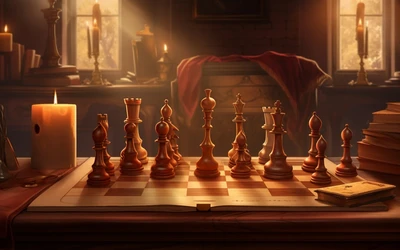
https://pixabay.com/photos/woman-knight-warrior-armor-chess-3268168/
The Queen's Knight Attack system (1.Nc3)
This is a powerful surprise move which has been used even in high level correspondence chessHi all
I have researched 1.Nc3 in the last few weeks, as well as playing it for some time. I find it is a very surprising first move.
It has been used in the past by a close ICCF correspondence chess world champion Ove Ekebjaerg with great effect. The 14th ICCF world chess champion was Tonu Oim and Ove came 2nd.
Here is an interesting game by Ove Ekebjaerg
Variation: 1.Nc3 d5 2.e4 - provoking black to play d4
Lichess successful GM's like Alexsur81 and IM Opperwezen have many "Dunst" games
Some very successful GM's on lichess e.g. Alexsur81 regularly make use of the "Closed Scandinavian" thus in effect playing 1.Nc3 with a different move order. 1.e4 d5 2.Nc3 is the same position as 1.Nc3 d5 2.e4
Example game of GM Alexsur81
This means that there are plenty of amazing game examples to research.
Surprise vs Accuracy considerations
One important consideration is to try and identify the tradeoffs made between surprise and accuracy. And from this view, I created an interesting quadrant diagram showing more clearly the balance between surprise and accuracy:
| IDEAL ! Here is what we want to know in as much depth as possible! Surprising and Accurate e.g. 1.Nc3 e5 2.Nf3! | Accurate BUT not surprising e.g. 1.Nc3 c5 2.e4 |
|---|---|
| Surprising BUT not accurate e.g. 1.Nc3 c5 2.Ne4 ?! | AVOID! No surprise AND Not accurate 1.Nc3 e5 2.e4 ?! |
The top left is the idea to head towards. A variation that is a great example of the top left is the following move sequence:
1.Nc3 e5?!
2.Nf3!
A lot of players expect 2.e4 - a transposition to the Vienna game and may be very happy with that with the black pieces if White does play 2.e4. This is reinforced by online databases which are not "playing the position" but rather showing you game transposition emphasis. Thankfully the Lichess master database is not biased by transpositions and does show you what real 1.Nc3 players play after 1.Nc3 e5 which is 2.Nf3!
Example game of "Surprising and Accurate"
1.Nc3 e5
2.Nf3!
Variations involving 1.Nc3 d5 2.e4 dxe4 are not such a fun-killer as previously suspected
Here is a nice example game:
Black plays e6
Now if Black doesn't play e6, there is a practical risk, especially in online chess of Bxf7+
See this game example:
My new course on 1.Nc3 - The Queen's Knight Attack system
https://www.youtube.com/watch?v=PJOZqhxuW0Q
Hikaru Nakamura game example - crushing Krush
https://www.youtube.com/watch?v=U9n1YCaW-28
Key takeaway points
- Surprise is a powerful weapon in the opening
- Surprise vs Accuracy is often a key tradeoff to make when thinking about which opening to choose or organising and preparing your own resources as well as prioritising researching for future preparation. The Quadrant diagram is a very simple tool that can be used to organise such a tradeoff between two important variables of interest - surprise and accuracy.
- You can think of the four Quadrant diagram to help prioritise the surprise vs accuracy tradeoff but can also apply other variables of choice such as "Fun vs Accuracy" and then see what the common openings in your top left corners are.
- 1.Nc3 has been used by high-level correspondence players with great effect in the past
- Check out my new course with a great discount at https://kingscrusher.tv/
Want to go further? Explore all my online chess courses at https://www.chessworld.net/online-chess-courses.asp – learn openings, tactics, strategy, and more.
Cheers, K
You may also like
 NM Chess-Network
NM Chess-NetworkMagnus Carlsen shows us a simple light-square strategy
One weakness allows one plan CM Kingscrusher-YouTube
CM Kingscrusher-YouTubeThe Complete Guide to Chess Opening Principles -"King Safety Driven Development"
An unexpected perspective on the classic golden chess opening principles CM Kingscrusher-YouTube
CM Kingscrusher-YouTubeThe importance of Chess Visualisation skills
Reminders abound for the importance of chess visualisation skills CM Kingscrusher-YouTube
CM Kingscrusher-YouTubeSupercharge Your Chess Tactics by Punishing Mistakes
Mistakes are what makes chess fun especially at lower levels. We need to be really good at punishing… CM Kingscrusher-YouTube
CM Kingscrusher-YouTubeMisleading Sheep-driven Online Openings explorers everyone should be aware of :)
Don't be sheep driven - but lichess masters database is very cool :) CM Kingscrusher-YouTube
CM Kingscrusher-YouTube